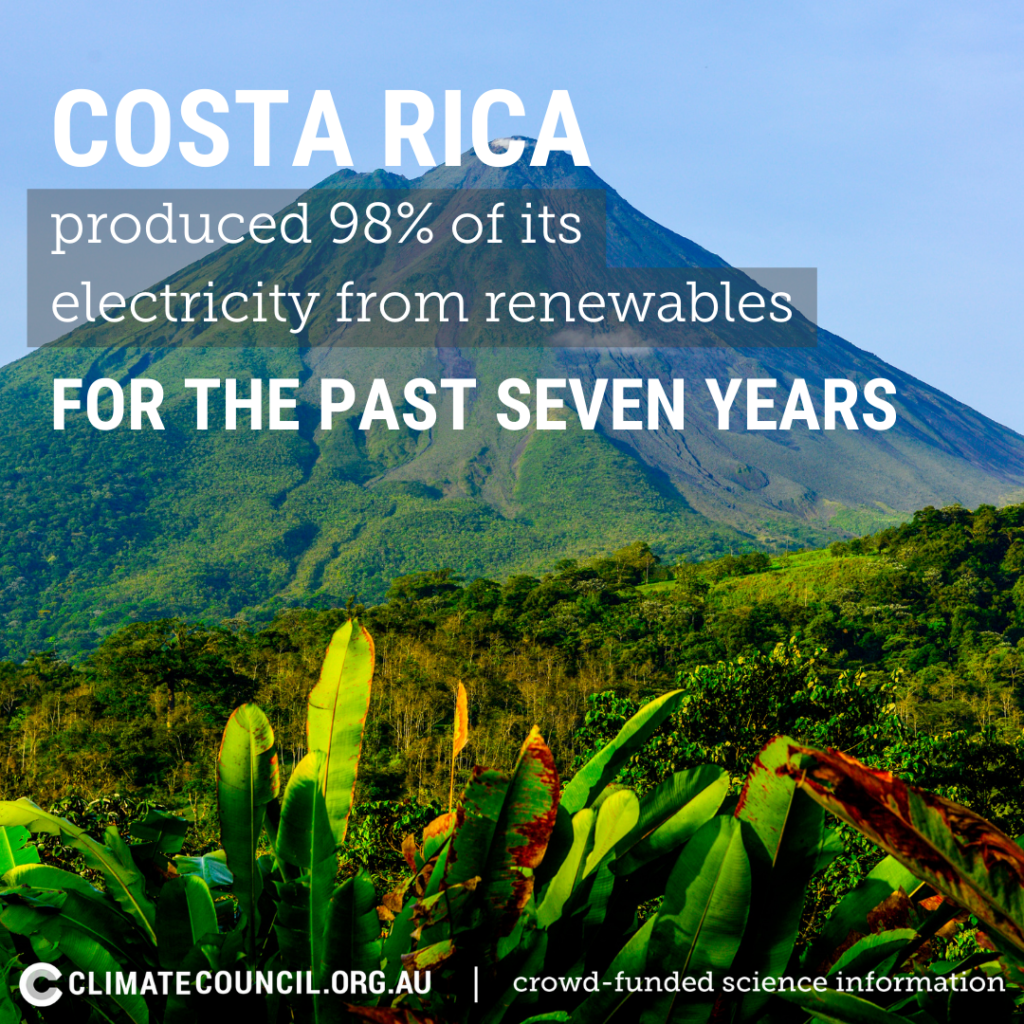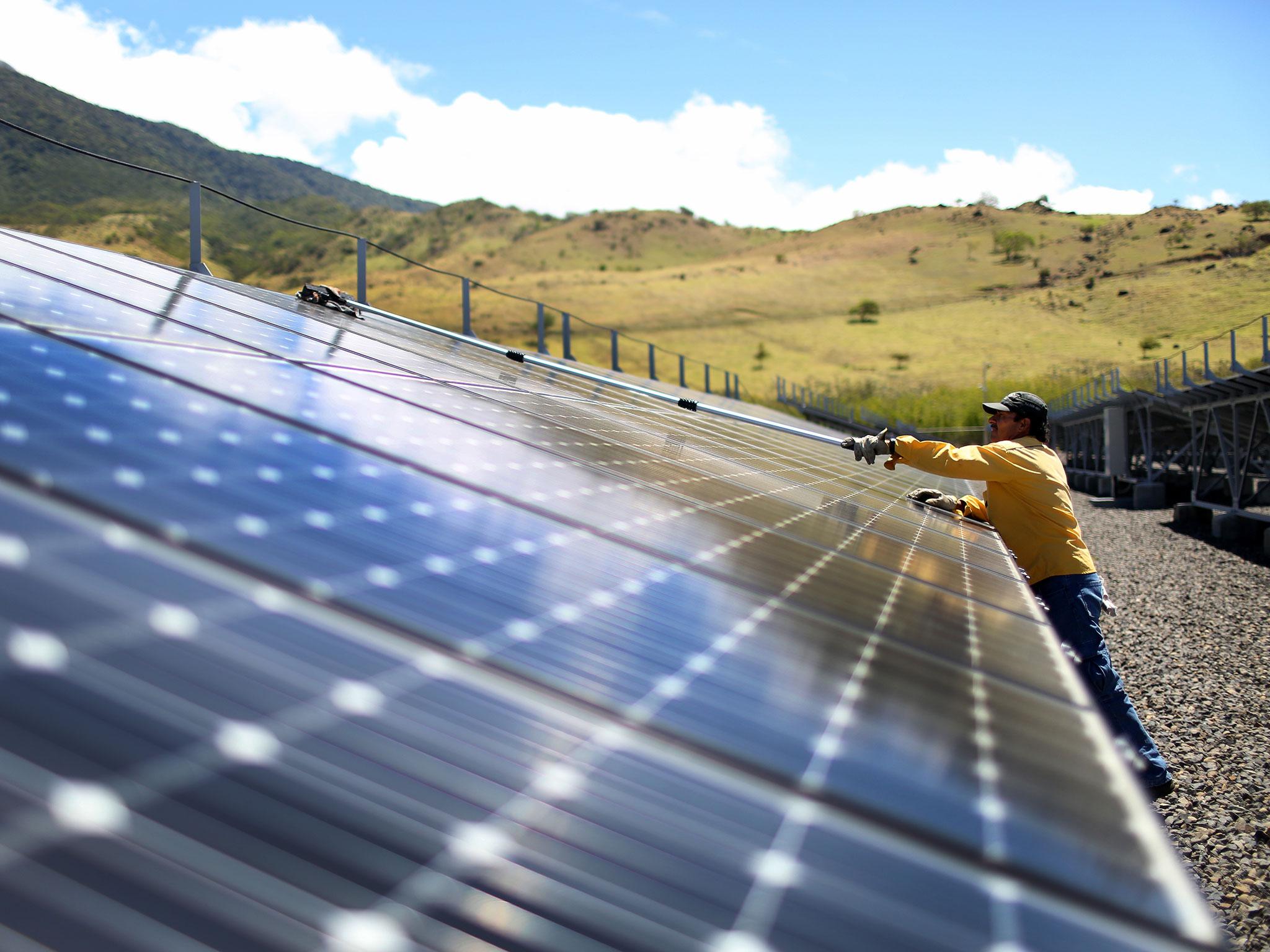Costa Rica's Renewable Energy: A Green Powerhouse
Is it possible for a nation to run almost entirely on clean, renewable energy? Costa Rica not only answers in the affirmative, but it also leads the world in demonstrating how it's done.
The Central American nation of Costa Rica, renowned for its lush rainforests, vibrant biodiversity, and commitment to ecotourism, has quietly emerged as a global leader in renewable energy. This dedication to sustainable practices isn't a recent trend; it's deeply woven into the country's history and its vision for the future. Costa Rica's remarkable success in this area stems from a combination of fortunate geographic endowments, proactive government policies, and a sustained commitment from its citizens. The nation has consistently prioritized the use of renewable energy sources for several decades, resulting in an impressive energy profile: almost 99% of its electricity comes from clean sources. This steadfast dedication has endured despite economic and environmental challenges, underscoring the country's unwavering resolve to embrace sustainable development.
Costa Rica's achievements in renewable energy are not accidental. The country possesses a significant geographic advantage, characterized by a high concentration per capita of rivers, dams, and volcanoes. This natural landscape facilitates a robust renewable energy output. Furthermore, Costa Rica boasts the fourth-highest rainfall per capita globally, receiving an average of 2,926 mm of precipitation annually. These abundant natural resources, coupled with forward-thinking policies, have positioned Costa Rica at the forefront of the global clean energy movement.
| Costa Rica's Renewable Energy Landscape | |
|---|---|
| Key Factor | Details |
| Geographic Advantage | High concentration of rivers, dams, and volcanoes; fourth-highest rainfall per capita. |
| Renewable Energy Sources | Hydroelectric power (approx. 78%), geothermal (15%), solar (less than 1%). |
| Electricity from Renewables | 99.78% in 2020, 98% in 2018 |
| Government Policy | Prioritization of renewable energy for decades, with goals to diversify the energy mix. |
| Challenges | Dependency on hydropower and the need to diversify in the face of climate change. |
| Regional Impact | Exporting surplus renewable energy through the SIEPAC interconnection system. |
| Historical Context | San Jos (capital) was the third fully electrified city in the world in 1884. |
| Current Goal | To move from a fossil fuel-based energy system towards renewable energy sources and expand power generation capacity. |
| Energy Mix | Efforts to reduce reliance on hydropower and diversify electricity generation during dry seasons. |
Source: IRENA - Renewable Energy Market Analysis: Costa Rica
The foundation of Costa Ricas success lies in its diverse renewable energy portfolio. Hydroelectric power has historically been the dominant source, contributing approximately 78% of the nations electricity. The abundance of rivers and the strategic placement of dams have made hydropower a reliable and efficient option. However, Costa Rica is also leveraging other renewable sources. Geothermal energy accounts for around 15% of its electricity generation, tapping into the nations volcanic activity. The country is also working to integrate solar power, even though it currently contributes less than 1% of its energy production. This diversification is a key element of Costa Rica's strategy to reduce its dependency on a single source and to build resilience against potential disruptions like drought.
The impact of Costa Rica's commitment extends far beyond its borders. The country is a key player in regional energy cooperation. The Siepac interconnection system allows Costa Rica to export its surplus renewable energy to neighboring nations, bolstering the region's clean energy capacity. Furthermore, the Central American Electrocorridor, which features over 50 electric vehicle (EV) charging stations along crucial trade routes, underscores Costa Ricas commitment to a green energy future. This initiative helps to solidify the nation's role as a leader in regional sustainable energy and transport. This initiative promotes electric mobility and contributes to the reduction of carbon emissions in the transportation sector.
Costa Ricas long history of embracing renewable energy started in 1884 when San Jos, the capital, became the third city in the world to be fully electrified, after New York and Paris. Initially, hydroelectricity was the primary source of energy, but it remained under private ownership for a long time. For several decades, the country has prioritized the use of renewable energy sources, which has led to nearly 99% of its electricity coming from clean sources. This historical commitment is a testament to the nation's forward-thinking vision, which prioritizes sustainability and energy independence. The country continues to build upon this foundation, striving to adapt and innovate in the face of challenges.
Costa Rica's commitment to renewable energy is particularly crucial, given its vulnerability to climate change impacts. Located in a region prone to hurricanes and tropical storms on its Caribbean coast, as well as seismic activity and a high number of volcanoes, the generation of renewable energy is not just an environmental imperative but also a matter of resilience. The effects of climate change, including reduced rainfall and more frequent droughts, are posing challenges to hydropower, which is central to its energy strategy. In response, the country is actively working to diversify its electricity mix. This includes boosting geothermal energy, exploring solar energy and other sources to decrease its reliance on hydropower and provide a more stable energy supply, particularly during dry seasons. The country is taking bold steps to diversify its energy portfolio.
Costa Rica's journey towards 100% renewable energy is a dynamic process. The country has demonstrated its ability to adapt and innovate. From a historical perspective, the use of renewable energy sources has been a key priority which has resulted in almost 99% of its electricity coming from clean sources. Despite challenges, Costa Rica continues to lead by example in the global shift towards clean energy. Costa Rica uses four main types of renewable energy sources: hydropower, geothermal, solar, and wind. Hydropower constitutes a substantial portion of Costa Rica's renewable energy efforts, making up a whopping 67.5% of its total renewable energy output. While hydroelectricity remains critical, the country is expanding its focus on other renewable sources. Advancements in Costa Rica's renewable energy efforts and diversification are a testament to its commitment to sustainable development and global leadership in clean energy. The country's proactive approach offers valuable lessons for other nations seeking to transition to a sustainable energy future.
In 2020, renewable energy in Costa Rica supplied 99.78% of the energy output for the entire nation. With renewable energy sources already making up nearly 93 percent of Costa Ricas electricity, the country is well on the way to reaching that goal. Costa Rica is taking bold steps to diversify its energy portfolio. The decision to visit Costa Rica becomes easier with this confidence. Costa Rica's energy policy aims to move from a fossil fuels based energy system towards renewable energy sources and to expand its power generation capacity, replacing old power generating stations and developing new projects.


